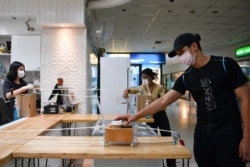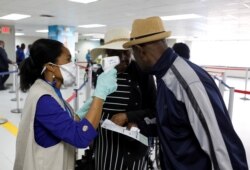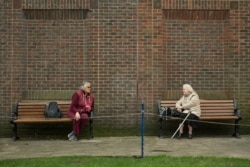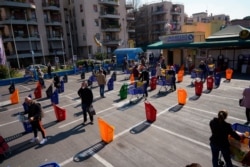As major cities in the United States and around the world roll out strict measures to control the spread of coronavirus, public health experts warn that a couple of weeks of self-isolation will not solve the problem and say the public needs to prepare for extended restrictions in response to the disease.
Dr. Jennifer Nuzzo, an epidemiologist with the Johns Hopkins University School of Public Health in Baltimore, explained the efforts to VOA as an attempt to buy time for an overwhelmed public health system.
“We're trying to reduce the number of people who become sick at any one time. And essentially what that does is that it stretches it [the epidemic] out over time,” she said, adding that this approach does not guarantee fewer infections but rather a more manageable burden on the health infrastructure.
Despite these efforts, she said, she expects the situation to get much graver in the days ahead.
“There's just not a lot of extra capacity,” she said, “Not enough doctors and nurses, not enough personal protective equipment, we're now seeing not enough important medical technologies like ventilators. So it's a really challenging situation.”
Nuzzo said scientists and medical practitioners raised concerns about inadequate capabilities with the U.S. health care system long before the crisis.
Nuzzo last year headed a joint effort by Johns Hopkins, the nonprofit Nuclear Threat Initiative, and the Economist Intelligence Unit, which resulted in the Global Health Security Index pointing to insufficiencies in the system in managing a pandemic. But even professionals such as Nuzzo didn’t foresee the extent of the problem.
“The situation that we're in in the United States, where we are unable to really scale up laboratory-based testing, was not something I would have anticipated,” she said. “That seemed like something that we were capable of handling in previous pandemics and epidemics, and so I hadn't anticipated that that would be as much of a challenge as it has turned out to be.”
Reaction to the epidemic around the world has produced varying results, but Nuzzo warned that no nation, no matter how developed, is immune to a devastating blow from a sudden spread of infections.
“I don't think there's any health system that can handle a huge surge in critically ill patients like Italy is seeing,” she said.
As far as the success achieved by some other countries, Nuzzo said she believes other factors led to those results.
“A very high proportion of their [Italy’s] cases are among individuals we know to be at increased risk of severe illness and death, and that's older individuals,” she said. “Other countries like South Korea and Singapore, that have had a bit more success in their response, have also had perhaps the luxury of having this disease be limited to more younger members of their population.”
Nuzzo said she thinks the problem is far from over even for China, where authorities said Wednesday there had been no new cases of domestic transmission for the first time since the coronavirus outbreak.
China is now beginning to remove restrictions in Wuhan by allowing a gradual return to economic activity. Nuzzo welcomed the news, saying she hopes the return of industrial production in China will improve U.S. medical equipment shortages.
“China is an important producer of essential medical products like personal protective equipment.” she said. “So we very much need them to go back to work. But it does raise the question of whether their cases will increase once they do go back to work.”
The ultimate answer to coronavirus will be a vaccine, but that might be years away, Nuzzo said.
“If all the science works in our favor and all the clinical trials worked out and we identify a vaccine that can be safe and effective, that's probably something that we could have, all going well, in 12 to 18 months,” she said.
“That said,” she added, “we still have to then produce it, we still have to manufacture it, and that requires dedicated facilities and, you know, a scale-up of resources that may not even fully exist.
“So I anticipate that getting quantities of vaccine at the levels that we will need will take some time thereafter, possibly years thereafter.”
Meanwhile, scientists are working on identifying drugs and therapies to help treat the disease.
It’s too early to calculate the disease’s global fatality rate, but Nuzzo said information can be gleaned from current trends, saying that for most of the world, “this disease is more deadly than the flu.”
She said she believes measures such as lockdowns and self-isolation that control the spread of the virus are of great value in controlling the surge of infections. Where possible, she encourages controlling stress and anxiety through physical activity outdoors to make isolation more manageable.
Reacting to a new National Institutes of Health study showing that the coronavirus can remain viable and infectious in droplets in the air for hours, Nuzzo stressed that there is no risk of contracting the virus from breathing. The study, she said, used an aerosol to disperse the virus in the air, in droplets which kept the pathogen viable for hours.
“It takes a procedure to generate an aerosol, it's not something that a human can just generally do throughout life,” she said, adding that droplets of saliva released through coughing or sneezing are too heavy and fall to the ground immediately, so they cannot float through the air to infect others for hours.












